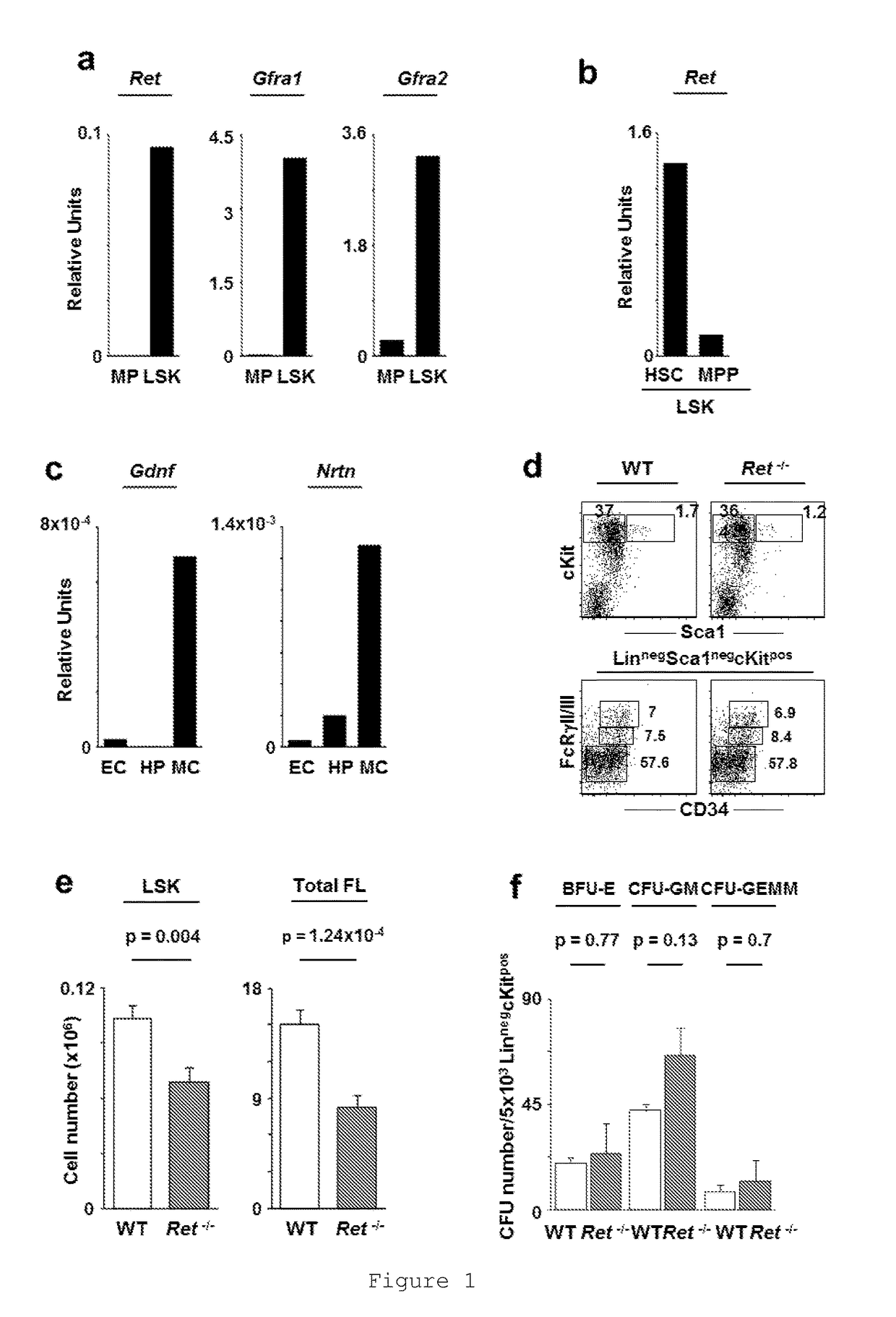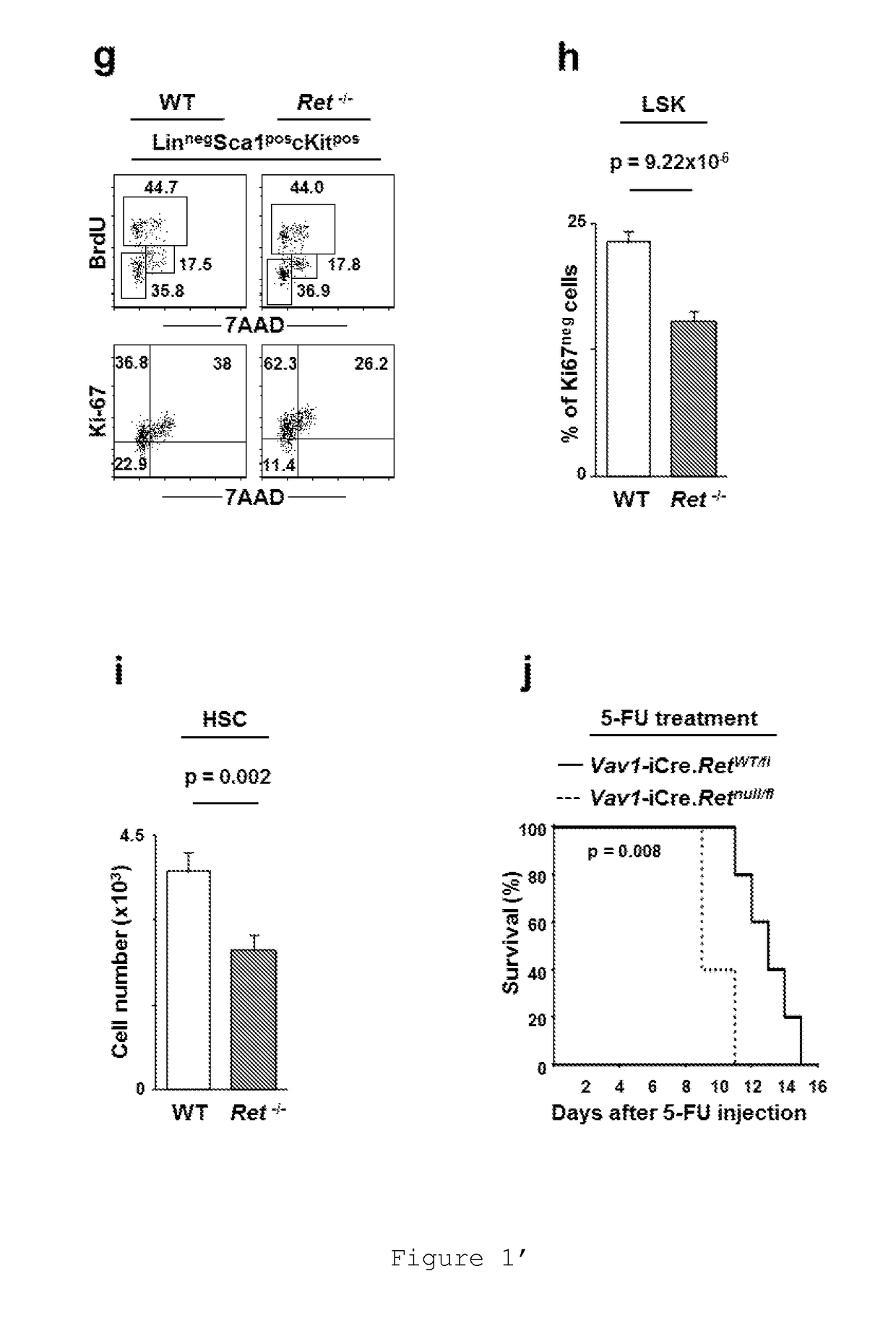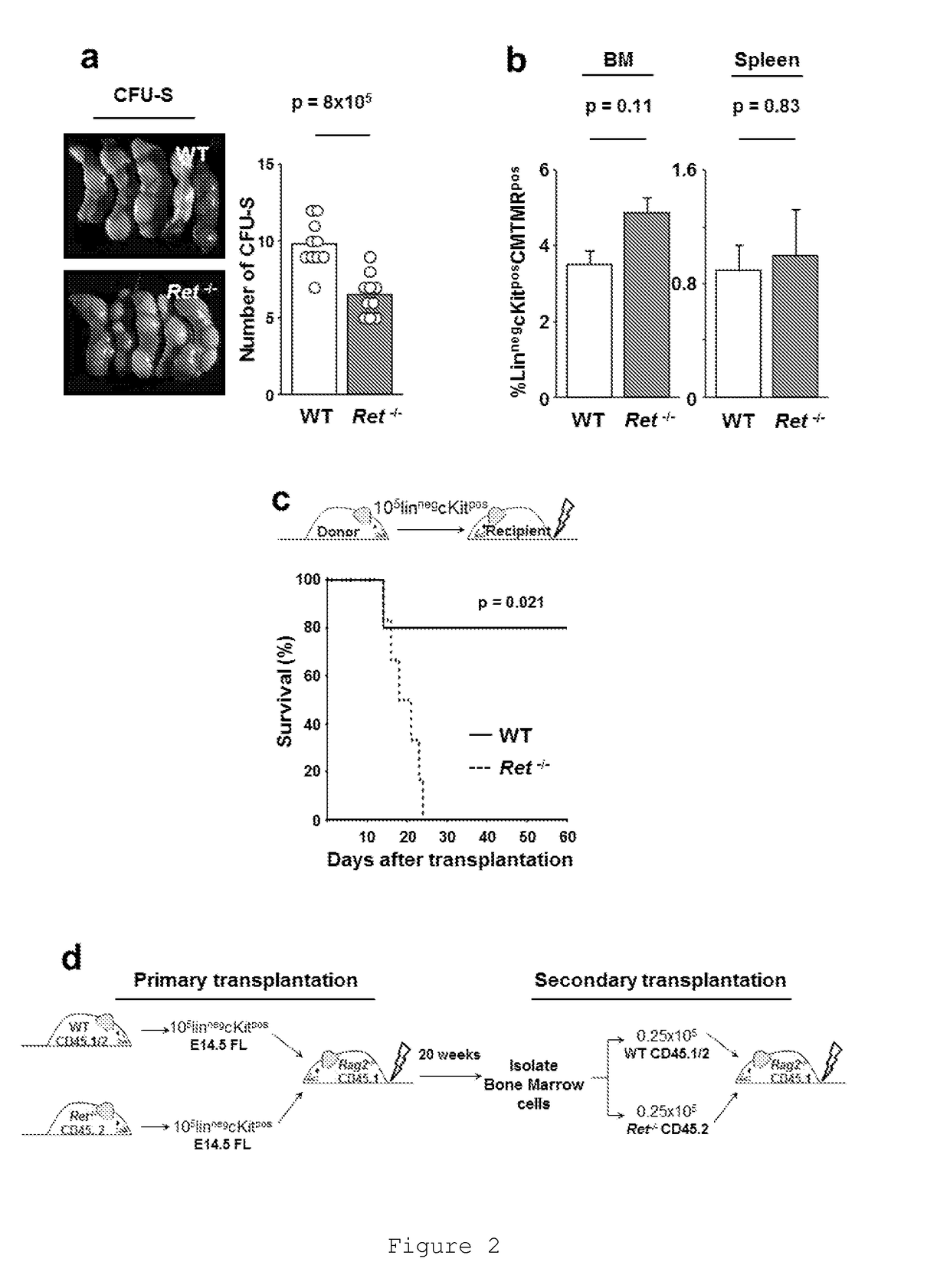Use of RET agonist molecules for haematopoietic stem cell expansion protocols and transplantation therapy and a RET agonist kit
a technology of haematopoietic stem cells and agonists, which is applied in the direction of biochemistry apparatus and processes, cell culture active agents, peptides/protein ingredients, etc., can solve the problems of poor engraftment and small hsc numbers of transplantation, and achieve in vivo transplantation efficiency, reduce hsc numbers, and improve hsc survival
- Summary
- Abstract
- Description
- Claims
- Application Information
AI Technical Summary
Benefits of technology
Problems solved by technology
Method used
Image
Examples
Embodiment Construction
[0032]Haematopoiesis starts during embryonic life, mainly in the Foetal Liver (FL), and is maintained throughout adulthood in the Bone Marrow (BM). Although HSCs are mostly quiescent in adults, they become proliferative upon physiological demand. Interestingly, autonomic nerves have been recently shown to actively participate in HSC niches raising the hypothesis that neurotrophic factors may regulate HSC function. The neuronal growth factor family includes the glial cell-line derived neurotrophic factor (GDNF) ligands (GFLs), which signal through the RET tyrosine kinase receptor and act mainly in the autonomous nervous system, kidney and mature lymphoid cells.
[0033]To determine the role of GFLs in HSC biology, the expression of their canonical receptor RET in embryonic day 14.5 (E14.5) FL LinnegSca1poscKitpos (LSK) cells was initially determined, a population highly enriched in HSCs. When compared to myeloid progenitors (LinnegSca1negcKitpos) (MP), LSKs expressed high levels of Ret ...
PUM
| Property | Measurement | Unit |
|---|---|---|
| stress response | aaaaa | aaaaa |
| purity | aaaaa | aaaaa |
| haematopoietic stress responses | aaaaa | aaaaa |
Abstract
Description
Claims
Application Information
 Login to View More
Login to View More - R&D Engineer
- R&D Manager
- IP Professional
- Industry Leading Data Capabilities
- Powerful AI technology
- Patent DNA Extraction
Browse by: Latest US Patents, China's latest patents, Technical Efficacy Thesaurus, Application Domain, Technology Topic, Popular Technical Reports.
© 2024 PatSnap. All rights reserved.Legal|Privacy policy|Modern Slavery Act Transparency Statement|Sitemap|About US| Contact US: help@patsnap.com










